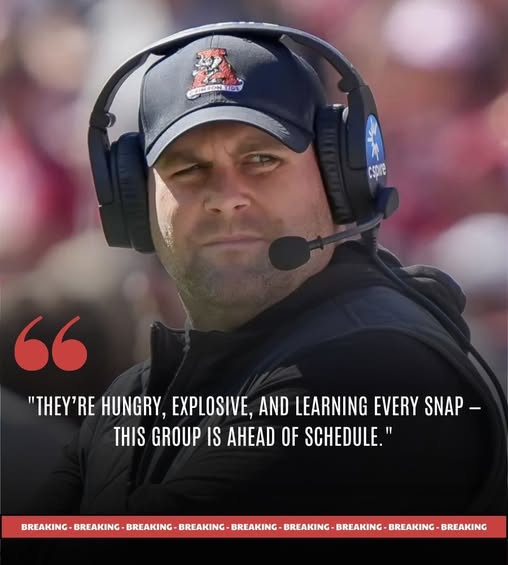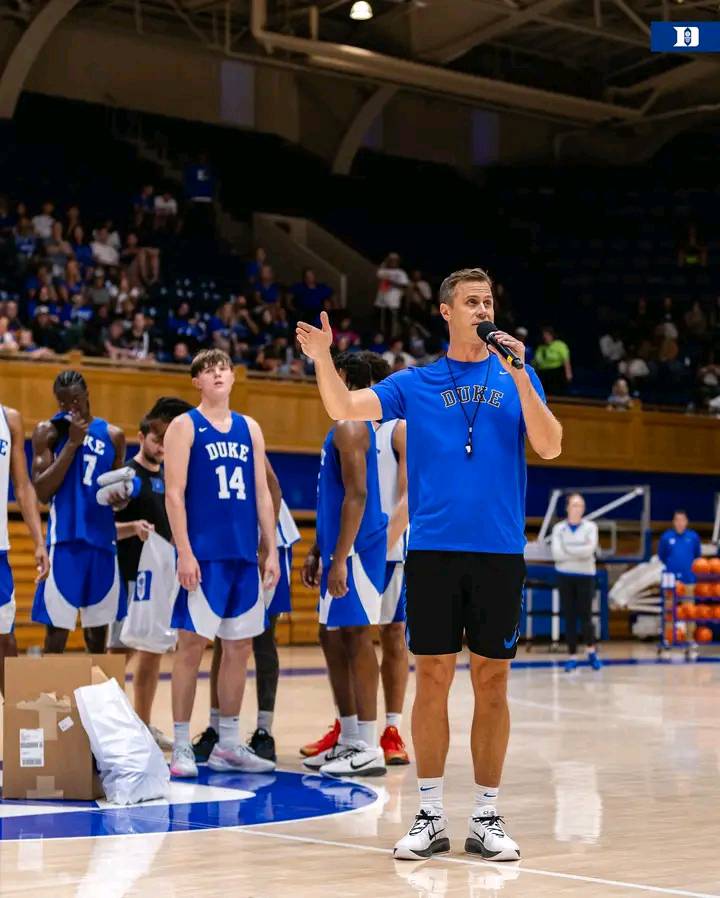Fearless Future Emerges: Wommack Hails Alabama’s Young Edge Rushers Racing Ahead in Fall Camp
The Crimson Tide’s new defensive charge has arrived, and it’s led by none other than defensive coordinator Kane Wommack, who, in just the early days of fall camp, has turned the spotlight sharply on Alabama’s next wave of pass-rushing talent. With seasoned veterans having moved on, the pressure on the newcomers is palpable—yet belief in their collective ability to rise has never been stronger.
From the moment camp commenced, Wommack’s tone has been resolute and optimistic. He’s not merely observing potential—he’s witnessing players leaping forward, accelerating their development, and staking their claim. The departure of key veteran defenders has ushered in a new era, and Wommack sees those stepping into the void responding with hunger, discipline, and early glimpses of production.
“Right now, I’m seeing these younger edge rushers making huge progress,” Wommack has asserted, offering reporters a rare glimpse into an evolving defense in motion. The early stages of camp are notoriously chaotic—playbook relays, conditioning tests, formation drills, repetition after repetition—but for Alabama’s younger defenders, the adjustment period appears to be evaporating faster than anticipated.
He’s identified several players by name, calling attention to their developed physicality and improved game instincts. While the veterans set the standard before, Wommack’s excitement is rooted in the transformation he’s witnessing: once raw prospects are now aligning mentally and physically with the demands of SEC-level pressure. These players are not just learning the system—they’re thriving in it.
It isn’t purely about technique or assignments, either. Wommack emphasizes the importance of anticipation and recognition—two elements that set apart good defenders from great ones. It’s one thing to react; it’s something entirely different to foresee, to anticipate the snap, to project the quarterback’s next move. And as the tempo of practice increases, he insists that some of the younger edge men are beginning to reach that vital cognitive threshold, where instinct catches up with athleticism.
In interviews with reporters, Wommack has repeatedly pointed out that this isn’t wishful thinking. These young rushers aren’t just showing flashes—they are executing. Some are winning their one-on-one reps, inside and outside, with a growing edge presence that threatens the pocket, disrupts timing, and forces passers off rhythm before plays can even fully develop.
That being said, Wommack hasn’t shied away from the reality that, while encouraging, fall camp is still a crucible for growing pains. There have been mistakes: misreads, technique lapses, missed assignments. But rather than express frustration, Wommack framed them as necessary, even welcome. Growth, in his view, must be built upon mistakes and correction. If a young player isn’t pushing boundaries—and yes, faltering a bit in the process—then they’re not pushing hard enough.
What’s more, the entire room has seen a rise in internal competition. Across the edge rushers’ area, energy is surging. Wommack credited the increased depth at linebacker and the Husky position as fueling a competitive environment where freshmen and sophomores are no longer content just occupying space—they’re battling for each rep like their futures depend on it. With versatile roles becoming increasingly valued in his Swarm D system, players who can slash off the edge one moment, ride the run game the next, or drop into coverage when called upon are earning attention and trust.
One name Wommack highlighted was Keon Sabb, who—returning from injury—has exceeded expectations in terms of comfort level and execution. While not exclusively an edge rusher, Sabb’s pace to rebuild trust in his body and reach peak performance has been nothing short of impressive. Wommack credited the training staff but noted Sabb’s personal drive as pivotal to his success.
But it’s the younger, emerging edge talents—those not yet accustomed to SEC grind—who have drawn the most excitement from Wommack. He’s seen them commit to physical development, adjust their techniques, and sprint toward game readiness faster than expected. It’s one thing to coach it, it’s another to actually see it transpire on the field.
As fall camp continues, Wommack made it clear that evaluations remain fluid. He called the current period as much about testing mental growth as physical. Can a defender recognize formations and communicate adjustments at full speed? Can he remain disciplined under fatigue and confusion? These aren’t just drills—they’re stress tests. And in Wommack’s view, his younger pass-rushers are passing them at an accelerated clip.
By pushing through reps, navigating adversity, and sustaining effort from day to day, these defenders are strengthening not just individually but collectively. Wommack believes this is shaping a front that could be more unpredictable, more ferocious, and more resilient than any Alabama has presented in recent memory.
But Wommack’s words carry weight because they’re rooted in accountability. He hasn’t said “they’re doing fine.” He’s stating: they’re stepping into production. And for a defense known for elite pressure schemes and dominating trenches, that’s a significant development. The culture here demands excellence—and for the first time since the staff turnover and roster turnover, camp chatter isn’t just filled with potential. It’s filled with progress.
Alabama fans may recall coaches speak optimistically every fall, referencing “practice speed” or “camp buzz,” only for that hopeful tone to be lost once the regular season intensifies. But this time, Wommack’s optimism stems from tangible growth: measured reps, positive rep ratios, clear execution in confined settings, and coaches visibly smiling at the energy shift within the room.
As the narrative continues to build, the essential question becomes: how will these young edge rushers translate camp strides into game-day impact? It’s one thing to impress during intra-squad drills. It’s another to warp game plans, force quarterback mistakes, or flip the momentum of a contest. Yet Wommack’s consistent assertion that these players are moving faster in comprehension and strength suggests he’s betting they’ll do exactly that.
In a season marked by transitions—coaching changes, roster turnover, schematic tweaks—Alabama’s ability to maintain defensive dominance may hinge on this next generation. If Wommack’s view holds true through camp, preseason testing, and into the first whistle of the season, then what we’re witnessing now is not just a bright future—it may be the dawn of a new defensive identity: built by young edge rushers who understand their opportunity and are relentlessly seizing it.
In short, the future of the Crimson Tide defense is rising fast—and Kane Wommack’s camp verdict is clear: Alabama’s young edge defenders are making huge progress, and the results could soon change everything.



